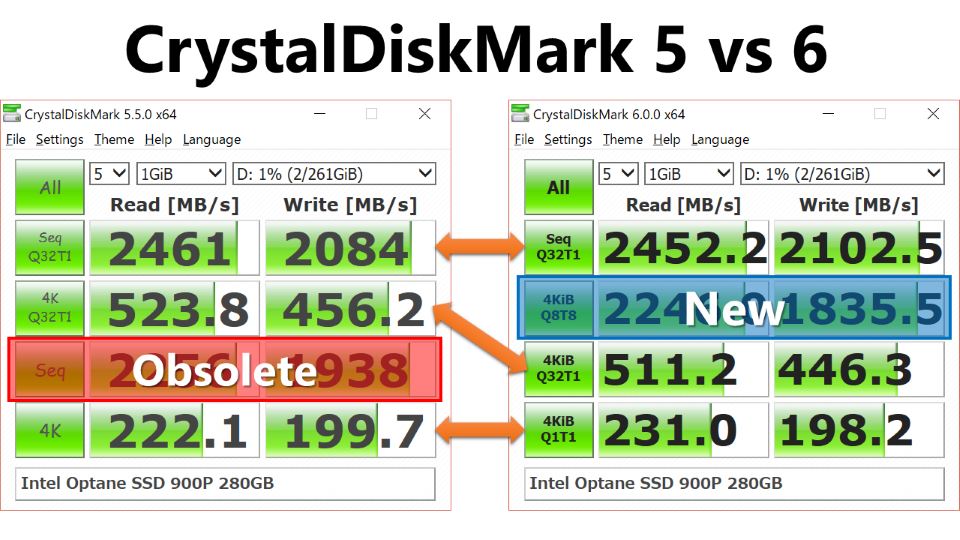
The Samsung drive uses "3D V-NAND," however, which features flash dies stacked vertically on top of one another, whereas the Plextor drive relies on older, yet still effective, planar flash dies, where the cells are stacked side by side. To put that in context, this is just a notch or two down from the recently released Samsung SSD 960 Pro, which is rated at 3.5GB per second for sequential reads and 2.1GB per second for sequential writes. Random-read IOPS should hover around 250,000, while writes will be in the neighborhood of 150,000, depending on the workload. The drive we're testing is the middle child at 512GB, and it's specified to run at 2.3GB per second for sequential reads, and 1.3GB per second for sequential writes. The drive is offered in 128GB, 256GB, 512GB, and 1TB capacities, and performance rises along with capacity, which is standard operating procedure for SSDs due to the parallelism in their design. On, we saw an additional charge of $30 for the add-in-card version compared to the metal-clad M.2 drive, which is reasonable enough. Anything older than Intel's 6th-Generation/"Skylake" architecture on the Z170 chipset or a recent Intel X99-chipset board probably doesn't have one of these connectors, meaning you'd have to opt for the add-in card variant, the M8Pe(Y). Controlling the action is a three-core chunk of controller silicon from Marvell, with the wonderfully descriptive model number "88SS1093." As noted earlier, the drive is offered in both the M.2 form factor, as well as attached to an expansion card in case you have an older system that doesn't offer a PCI Express M.2 slot. The NAND is made by Toshiba and is relatively new, as it was made on a 15nm process. The M8Pe uses good old-fashioned multi-layer cell (MLC) NAND, which is known for its high performance and long endurance. Still, PCIe x4 is a massive improvement over SATA instead of running out of bandwidth, we're now able to see SSDs that run as fast as current technology permits and still not saturate the bus. Due to overhead, no drive will hit that mark, just as SATA drives generally top out at around 550MB per second.

That means this drive could theoretically hit 4GB per second.

The main benefit to these two bits of tech is that the PCI Express bus has a much wider path than SATA, allowing up to 1GB per second of transfer speed per lane allocated to it, compared to SATA's maximum theoretical throughput of 600MB per second. It also uses the all-new NVMe protocol instead of AHCI, which allows the drive to handle a much larger queue of requests than before, and reduces latency as well. The M8Pe rides the PCI Express bus and uses four PCIe lanes, too, which is currently the most available for a single SSD. So Plextor has its work cut out for it.įor its part, Plextor is giving its new drive a fighting chance at running with the top drives in its class.

But the bad news is, the company is up against the absolute fastest consumer SSDs available from gargantuan companies. The good news for Plextor is that it doesn't have too much competition in this space at the moment, compared to the vast number of drives that exist in the SATA world. The M8Pe is part of a new crop of high-end SSDs that are currently looking to establish dominance, including such luminaries as the Samsung SSD 950 Pro, SSD 960 Pro, and SSD 960 EVO, as well as the Kingston HyperX Predator, the Toshiba OCZ RD400, and the Intel 750 Series. So we're going to refer to the drive in our review as just "M8Pe," which is how it's often listed at online stores, as well. It's distinguished on Plextor's site as the "M8Pe(Y)," while the M.2 version we're reviewing is listed as "M8Pe(G)." (Not terribly evocative product names, these.) There's also an "M8PeGN" model that ditches the exterior stripes and styling for a more traditional bare-circuit-board M.2 drive.Īll three versions are sold in the same capacities, and they all feature the same physical drive inside.

That said, the M8Pe drive is an evolution of Plextor's PCIe SSD lineup, replacing the M6e Black Edition from 2015, which had similar styling and was indeed an M.2 drive, just mounted to a PCI Express expansion card.įor the record, Plextor also sells a version of the M8Pe (pictured below) as a full-blown PCI Express add-in card. It's got all the features that one could want in a high-end SSD here in late 2016, including a PCI Express interface, use of the cutting-edge NVMe protocol, and specs that are a quantum leap beyond that was possible back in the "olden days" when people were stuck using SATA-based SSDs. The M8Pe holds the top spot in the company's product lineup.
#Crystal diskmark freezes software#


 0 kommentar(er)
0 kommentar(er)
